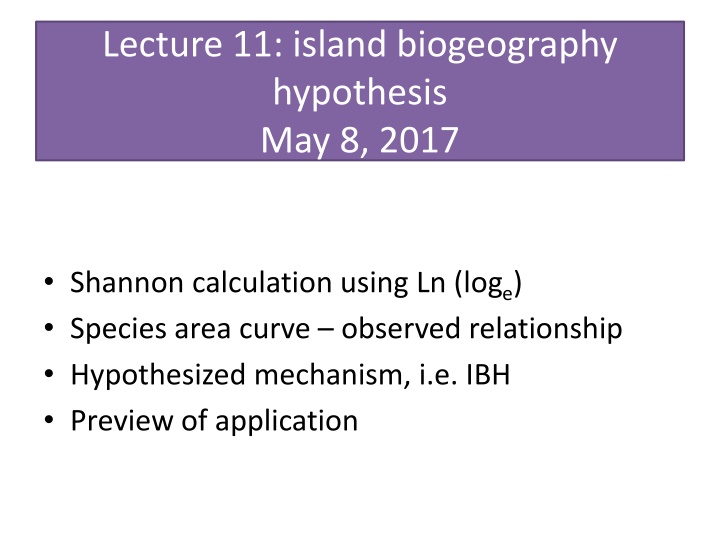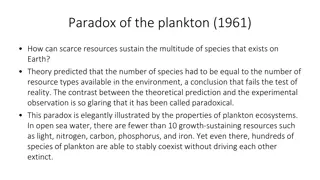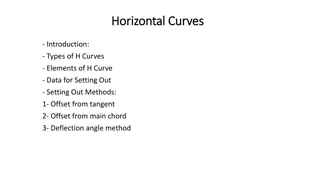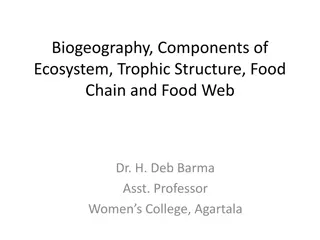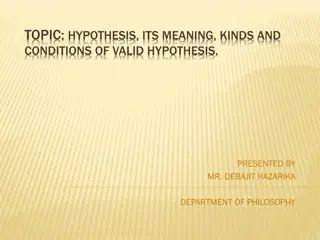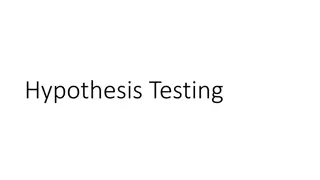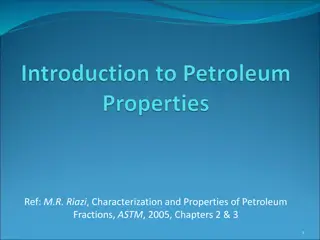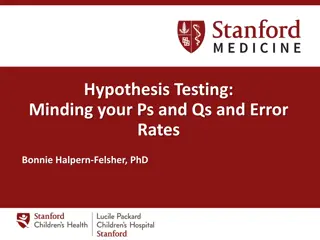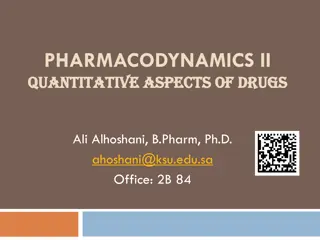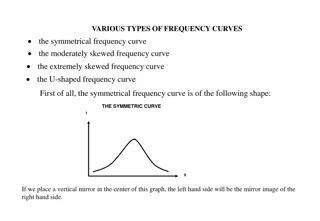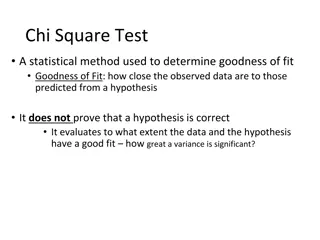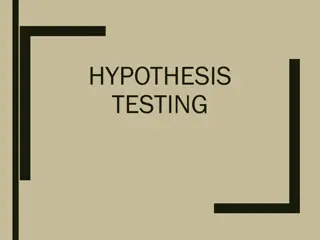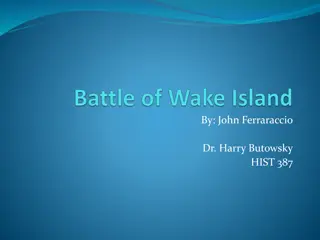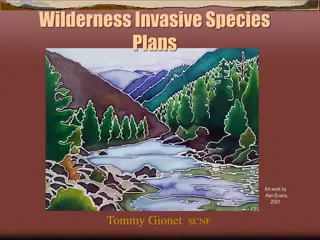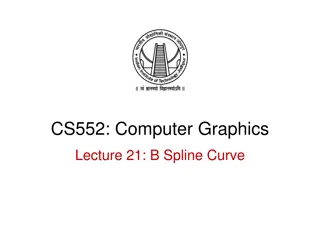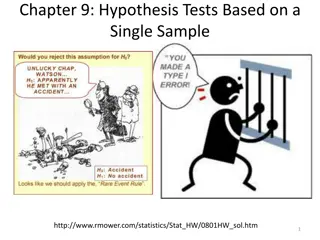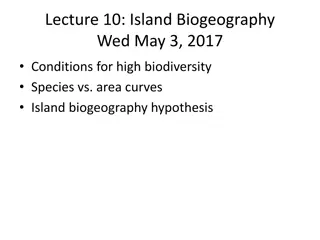Island Biogeography Hypothesis and Species-Area Curves Overview
Explore the Island Biogeography Hypothesis through Shannon calculations and Species-Area Curve observed relationships. Learn about the mechanisms of island biodiversity, generalizations of species richness, and equilibrium concepts. Discover how area size influences species diversity and the impact of agriculture and pollution. Gain insights into the theories of island biogeography by EO Wilson and MacArthur.
Download Presentation

Please find below an Image/Link to download the presentation.
The content on the website is provided AS IS for your information and personal use only. It may not be sold, licensed, or shared on other websites without obtaining consent from the author.If you encounter any issues during the download, it is possible that the publisher has removed the file from their server.
You are allowed to download the files provided on this website for personal or commercial use, subject to the condition that they are used lawfully. All files are the property of their respective owners.
The content on the website is provided AS IS for your information and personal use only. It may not be sold, licensed, or shared on other websites without obtaining consent from the author.
E N D
Presentation Transcript
Lecture 11: island biogeography hypothesis May 8, 2017 Shannon calculation using Ln (loge) Species area curve observed relationship Hypothesized mechanism, i.e. IBH Preview of application
announcements Reading Chap 14 agriculture Chap 11 pollution, that follows from ag Homeworks #3: stream biodiversity in context (due Wed) #4: Island biodiversity (due Wed May 17) Quiz 2 Mon May 22 Species area curves Mechanisms of island biodiversity
Comments on next quiz In class Homework quiz Simpson and Shannon #3 Species area curve #4 Island biodiversity equilibrium #4 Applied to the questions of habitat area, connectivity and land use. Impact of agriculture and pollution (from the reading).
Species-Area Curves Log area is common. For example, as area gets 10 times bigger, increase in species by roughly 50% to 100% (doubles) No matter where you start
Species-Area Curves This idea has been generalized: S = C * AZ S = species richness C = a taxonomic specific constant (species/area) A = Area Z = similar for many islands, typically < 0.1
Species area curve S = C*Az C = .2 species/km^2 z = .3 11-1 Plot from 10 km^2 to 1000km^2
Species area curve S = C*Az C = .2 species/km^2 z = .3 Plot from 10 km^2 to 1000km^2 Curve 45 40 35 30 25 C z 10 10.0 30 13.9 50 16.2 100 19.9 300 27.7 500 32.3 1000 5 0.3 20 15 10 5 0 0 200 400 600 800 1000 1200 39.7
Island Biogeography EO Wilson s studies on ants led to the theory of island biogeography. Every 10x increase in island area led to a 2x increase in the number of ant species (ant S). An equilibrium ant S on an each island: ant S depends on island size & distance from source Teamed w/ MacArthur to make theory: 1963
Island Biogeography MacArthur & Wilson 1963 MacArthur & Wilson (1963) islands off New Guinea From Cain et al. Ecology.
Island Biogeography Theory S Lowest As distance increases, S decreases. Mainland As area increases, S increases. S Highest
Island Biogeography Theory Examine equilibrium number of species Area effect: Larger islands support higher S due to more complex habitat and lower extinction rates due to larger populations. Isolation effect: Nearer islands support higher S due to greater immigration and recolonization rates.
Island Biogeography Theory MacArthur and Wilson 1967 Number of Species Time Why time? What does this represent?
Island Biogeography Theory Near Rate of Immigration Far Number of Species MacArthur and Wilson 1967
Island Biogeography Theory Small Rate of Extinction Large Number of Species MacArthur and Wilson 1967
Island Biogeography Theory If we have species immigration rate and species extinction rate, we can calculate S. S = Immigration Extinction Equilibrium S occurs when Immigration = Extinction (Note the similarity to population growth = b d + i e)
Island Biogeography Theory Small Island Near Mainland Far Large Rate of Extinction Rate of Immigration Equilibrium Number of Species (S) What Does Equilibrium Mean? MacArthur and Wilson 1967
Island Biogeography Theory MacArthur and Wilson 1967
Island Biogeography Theory Small Island Far from Mainland Rate of Extinction Rate of Immigration Number of Species (S) MacArthur and Wilson 1967
Island Biogeography Theory Near Mainland Large Island Rate of Extinction Rate of Immigration Number of Species (S) MacArthur and Wilson 1967
Island Biogeography Theory Rate of Extinction Rate of Immigration Number of Species (S) 10-3. Fill in the graph for near the mainland, small island. Relatively how many species (high, medium-high, medium, medium-low, low)?
Island Biogeography Does island biogeography apply to habitat islands on continents? Why do islands start with fewer- than predicted species at small areas compared with continents? From Cain et al. Ecology.
Island Biogeography Can theory can be applied to habitat islands on larger land masses? Examples?
Species and Area W.D.Newmark Conservation Biology 1995: Rate of mammal extinction in western parks.
